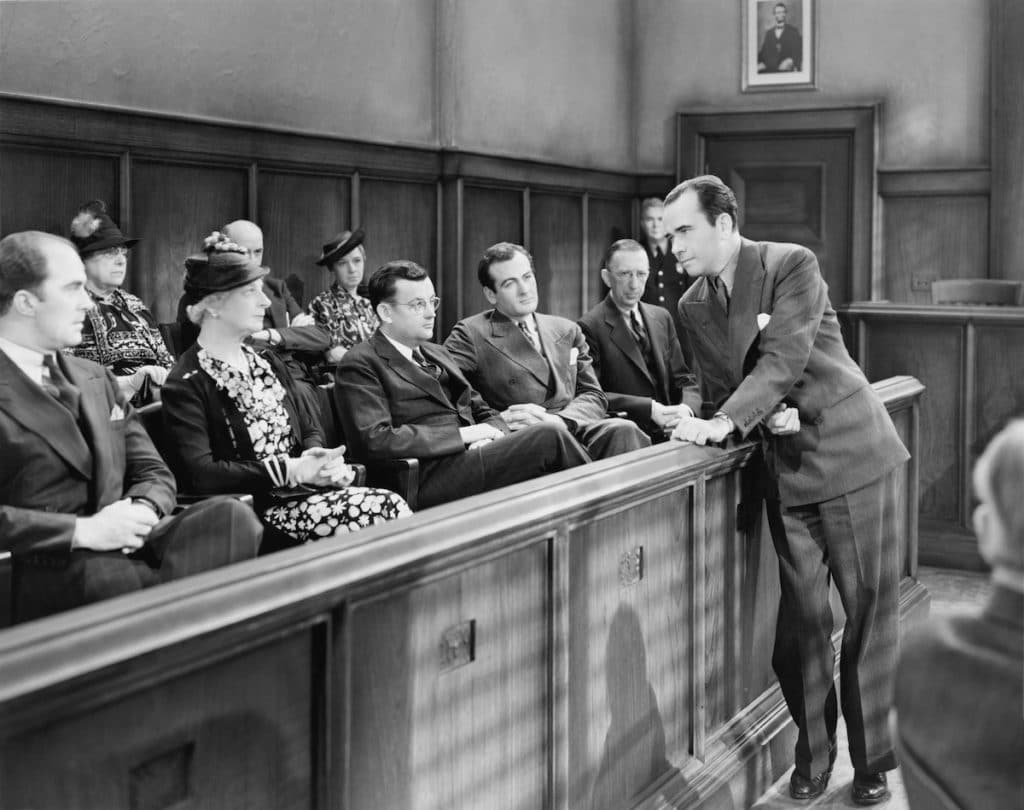Mastering Jury Trial Preparation: Opening and Closing Statements
The American Bar Association deems a trial lawyer’s opening and closing statements as the bookends of your trial. Yes, they frame the opening and closing of your trial, but they also provide an opportunity for you to tell your client’s story and frame it in a particular way so that the jury might appreciate it in a new light. We know the opening and closing statements from films, of course, as many have achieved classic status. What these fictionalized versions of the opening and closing statements do is certainly accentuate the narrative power that is possible with a well-constructed opening statement. So we thought we would take a look at just how vital a powerful and truthful opening and closing statement can be for any case.
Famous Courtroom Scenes from Cinema
Let us go back a few years. We can revisit any number of classic courtroom scenes, but one that often stands out in people’s minds is the film with Matthew McConaughey and Samuel L. Jackson. The film was based on a John Grisham book and got quite a lot of play upon its release because of its powerful statement on race. If you don’t remember the film, the plot deals with a young African American girl being brutalized by a couple of white supremacist-types. As the two suspects are being led from their parole hearing, the father of the victimized girl—played by Samuel L. Jackson—bursts in and kills the two suspects in cold blood in the courtroom steps. The lawyer must then defend the father and find a way to make the jury believe that the murder of the two accused rapists was justified. The final closing statement shows McConaughey narrating the whole story to the jury and then using a slight narrative trick at the end to catch the jury in their own bias. It’s very dramatic but seems to work quite well and it certainly highlights just how moving these statements can be.
What are some useful tips and approaches we here at Jonathan Leach, LLC help lawyers with when preparing for trial?
Every attorney knows that the opening statement is the first impression. There is a lot that rides on the first impression and the opening statement should open the door for the rest of the trial themes to be presented. It’s also vital to be exceedingly clear about the evidence that will be presented and what that evidence intends to prove. Using balanced and ethical rhetorical devices is a good way to set up your trial themes the right way.
What To Expect from an Effective Opening
There is a couple of characteristics to keep in mind when it comes to an effective opening:
- Present a clear theme of the case. We have written about in previous blogs about the importance of presenting your trial theme and being very clear about what that theme is and how it relates specifically to your client and/or your client’s case. This is the emotional undercurrent of your case and should be coherently tied to the overarching narrative.
- Mind the organization. It’s important to understand a little bit about how people listen and how people retain information. Thinking about how you structure and organize your argument will be essential to how the jury remembers it. It’s important to place key information in certain places in the statement. The principle of primacy and recency state that people remember information best when it is placed at the beginning or end.
- An effective opening statement will make full use of rhetorical strategies like questions and inoculation. The term inoculation is associated with a medical technique of making the patient more resistant to disease. In the same way, an opening statement makes use of rhetorical devices that make the juror less resistant to doubt by presenting a weakened version of the opposing side’s trial.
- Help jurors see the case from the client’s perspective. This is a major aspect when composing statements. Jury attorneys want to find a way to make the case relatable and to have the jurors put in the place of your client so that they might see the situation and circumstances from their perspective. In any persuasive attempt—in and out of the courtroom— this is a requirement for any good argument.
Research shows that the attention level of jurors is at the highest when it comes time for the opening statement. This might be for several reasons: they are excited to have been chosen, they are new to the process, they are filled with intentions of serving their duty, etc. This is why they are in a heightened state of awareness and susceptibility to impressions. The opening statement must be carefully thought out and devised in order to take full advantage of the jury’s state of mind.
When it comes to trial preparation, here at Jonathan Leach, we support attorneys as they work through their trial statements and preparation. Common and general tips also include:
- The need to establish credibility and sincerity
- Addressing negative facts or evidence head-on. Don’t let anything surprise the jury about your client or case. You want to address those pieces of evidence or facts that might seem problematic and address them from the start.
- Set the right tone from the beginning
There is so much to unpack in a good opening and closing statement. We use sophisticated jury research and present mock scenarios that allow attorneys to see how much of their message is getting across. If you need to prepare for trial, connect with Jonathan Leach, LLC today and we’ll help you get ready.

